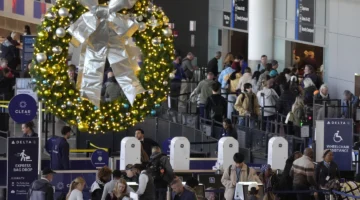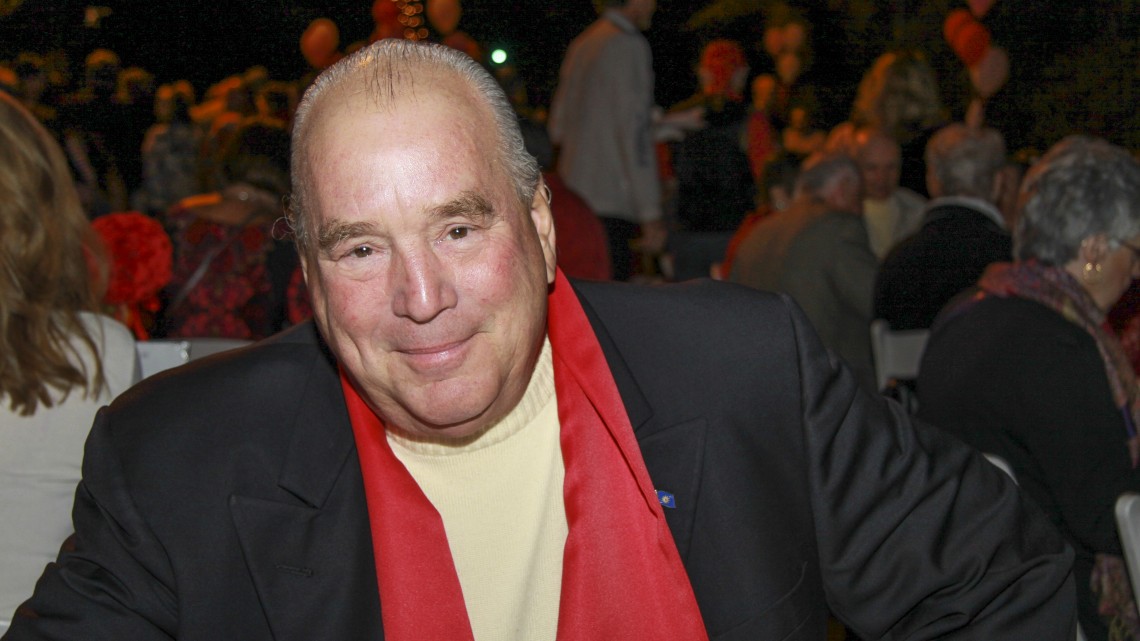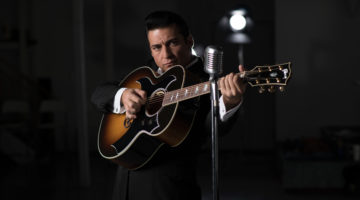Sir Peter Anderson and the Conch Republic:
The Adventure Unfolds
Part IV
As told to Mark Howell
Mark Howell’s biographical portrait of Sir Peter Anderson published in Konk Life during last year’s Conch Republic Independence Celebration proved to be one of the most popular profiles he has ever worked on. As a consequence, readers are asking us for more. And there is more. Enjoy.
We left off with Peter Anderson being appointed the Conch Republic’s first Secretary General by Key West Mayor (and Conch Republic Prime Minister) Capt. Tony Tarracino by virtue of formal City of Key West Proclamation.
Much to his dying mother’s chagrin, Peter decided to take this silly job seriously.
http://konknet.com/konk-life/contributors/mark-howellHis first big test came just a year later when, while sailing in the Bahamas, Secretary General Anderson sought a meeting with the Bahamian government on behalf of the Conch Republic.
On a Friday afternoon, at dock in Nassau, he received a return call. Abandoning his bilge-cleaning duties, he ran to the office at the other end of the dock to hear the secretary to the Permanent Secretary to the Foreign Minister of the Bahamas wondering if he could meet the Permanent Secretary that very afternoon. A quick boat shower and on with the slacks and blazer, he jumped into a cab and went to the Foreign Ministry on East Hill Street.
Ushered into the formal receiving room with its 14-foot ceilings and 10-foot fireplace, it was only a few moments before a magnificent Bahamian lady swept into the room, hand outstretched, and introduced herself as Ms. Mary Sweetnum, Permanent Secretary.
She led Anderson and his sailing companion from Key West to a collection of Queen Anne chairs grouped beneath floor-to-ceiling windows, with full length red-velvet drapes. Quite sure that no one had leaned back in these chairs for more than 200 years, the Conch Republic party perched on the very edge of them in perfect posture and the meeting began.
The Permanent Secretary first asked why the Conch Republic was coming to the Bahamas. The Secretary General responded that “Our founding fathers, the Conchs, came from the Abacos in the Bahamas, and the first place a child should come for recognition is to the parent.”
Digesting this, the Permanent Secretary asked Anderson, “What does the Conch Republic hope to accomplish as a nation? What are its goals?”
Anderson had never given this a moment’s thought.
In fact his thinking had not gone beyond setting up the meeting. But the muse did not fail him. He looked the Permanent Secretary in the eye and said, “Madam, the only anti-gravity device yet invented on this planet is levity. So it is our function to be the joker in the deck. You may not always wish to play with us, Madam, but we have to be there, or you’re not playing with a full deck.”
When the Permanent Secretary regained her composure, she asked if we had taxes in the Conch Republic. The Secretary General said, “No. We don’t believe in taxes for the Conch Republic. When we need to raise money, we throw a party.”
At the end of the meeting, the Permanent Secretary turned to Anderson and said, “On a personal note, I wish to thank you for this meeting. I’ve been in some very strenuous negotiations with the Nigerians all week. You have started my weekend off on the perfect note.”
Thus it was in this meeting that the Conch Republic’s Foreign Policy was born: “The Mitigation of World Tension through the Exercise of Humor.”
Another test came one Wednesday morning in mid-September 1995. Anderson got an early morning call from the mother of his daughter, Judith Anderson (later confirmed by Bill Becker of US1 Radio News), informing him that the United States Army was planning an invasive training exercise in Key West (simulating a “geographically isolated foreign country”) for that weekend. “What did the Conch Republic know about this?”
“Nothing,” said Anderson “But I will get to the bottom of it.’ He got on the phone with the city manager and the mayor, the chief of police and the sheriff but no one in the city knew anything about it.
So the Secretary General called the Conch Republic Navy, the Conch Republic Air Force and the Conch Republic Army to an emergency meeting of the War Cabinet at Schooner Wharf bar that very night.
Attending the meeting were David Paul Horan with General of the Air Force Fred Cabanas, Army General Geoff Chapman and Admiral Finbar Gittelman, at that time the 2nd Sea Lord of the Conch Republic Navy.
Over a few libations, the War Cabinet hatched a battle plan to repel the U.S. Army’s 478th Civil Affairs Battalion on Friday.
On Thursday morning, the Secretary General got on WOZN Radio and US1 Radio to mobilize the nation to stop the U. S. Army from taking over the Capital of the Conch Republic.
The Secretary General then wisely decided that, knowing how much authority hates surprises, he’d better call the 478th and tell it what they were in for.
After establishing his credentials to the person on the other end of the phone (“You’re what? You’re who?), he was patched through to a Major Hooper. The Secretary General explained to the Major that the Conch Republic planned to stop his Battalion at the entrance to Key West at the foot of the Cow Key Channel Bridge.
Major Hooper, expressing some astonishment, asked why the Conch Republic would do that. Anderson explained, simply, “Major, didn’t your mother teach you to knock before you enter and to call before you come?”
The major had nothing to say. Nobody had spoken to him about his mother’s training in a very long time.
The Secretary General told him that a battle plan had been drawn up and that he’d be delighted to fax a copy of it to him so, “You know what to expect on the morrow.” The Major said, “Please do.” His manners were improving.
At 9:30 p.m. that night, on the very eve of battle, the Secretary General got a call from the Major hoping to avoid a “potentially ugly confrontation between our forces.” Anderson informed Major Hooper that we had a list of demands the 478th must accept before we would allow it to enter the Capital. “We could fax that to you immediately.”
“Please,” said the Major. His manners were continuing to improve.
Fifteen minutes after the list of demands was sent, the phone rang. It was the Major astonishingly stating he had no problem with any of the demands.
Fifteen more minutes and the Secretary General’s fax machine spit out a document on the letterhead of the United States Department of the Army declaring, in part, that “…our training exercise is in no way meant to impugn the sovereignty of the Conch Republic.” Amazing.
The next day, Friday, Sept. 22, 1995, at high noon, having received reports from a newly formed secret intelligence unit of the Conch Republic known as INTERCONCH that a column of 478th Humvees was headed down the Keys, the Secretary General launched the Conch Republic Air Force just as the convoy entered Rockland Key.
General Cabanas, in several low passes in his biplane over Boca Chica Bridge, bombed the convoy with copious quantities of stale Cuban bread. In the words of Peter Anderson, “He nailed them — chunks of bread in the radiator grilles, under the dashboards and the seats of the Humvees.”
The vehicles arrived at Cow Key Channel Bridge, the only vehicular way in and out of the island, only to find the road blocked by a blue, pink and gold barricade of crêpe paper, and a force of 300 Conch Republicans armed with loaves of stale Cuban bread ready to repel their invasion. The convoy ground to a complete halt, and out of the lead Humvee stepped Major Hooper.
Admiral Wilhelmina Harvey, First Sea Lord of the Conch Republic Navy, having received a battlefield promotion to Supreme Commander, Armed Forces of the Conch Republic, in full dress uniform presented Major Hooper with the Conch Republic’s list of demands. First among these was a requirement that the Army troops surrender their weapons.
The Major, at 6-foot, 5-inches, leaned down to the Secretary General and whispered, “We’re a Civil Affairs Battalion. We don’t have any weapons.”
The Secretary General looked up at the Major and said sternly, “Just say ‘yes, ma’am,’ Major.”
The Major turned to Wilhelmina and said, “Yes, ma’am.”
Admiral Harvey said, “Thank you, and now,” she added brilliantly, “I return them to your custody.”
Wilhelmina then read the list of our other demands, including a pledge to recycle and to treat our women and institutions with respect, then handed the list to the Major to sign. He signed.
Among those demands was a pledge to fly Conch Republic courtesy flags during the Army’s incursion.
As the vehicles entered, flags of the Conch Republic were handed out to each element of the convoy, which dutifully flew those flags from their vehicles for the entire weekend.
At the end of that weekend, during a courtesy debriefing, Major Hooper said to Secretary General Peter Anderson, “I want to thank you for adding a valuable adjunct to our training exercise in recognizing the need to respect the concerns of the indigenous people as we go about our mission.”
The Conch Republic was most pleased.
Six weeks later, the 478th Civil Affairs Battalion was in Bosnia helping to establish civil order in that war-torn country. “We like to think it was a kinder and gentler 478th due to its experience in the Conch Republic,” said Anderson.
Thus, the Conch Republic became the third nation on earth ever to stop the United States Army. The first was the Seminole Indian Tribe. The second was the Vietnamese. Third was the Conch Republic.
But Secretary General Anderson’s mettle was also tested when President Clinton announced his first Summit of the Americas to be held in Miami in December of 1994. Would the Conch Republic be asked to attend?
… See next week.
[livemarket market_name="KONK Life LiveMarket" limit=3 category=“” show_signup=0 show_more=0]





Mark,
A very well done piece. You have tapped into the essence of Peter Anderson and presented a fabulous picture!
Tom